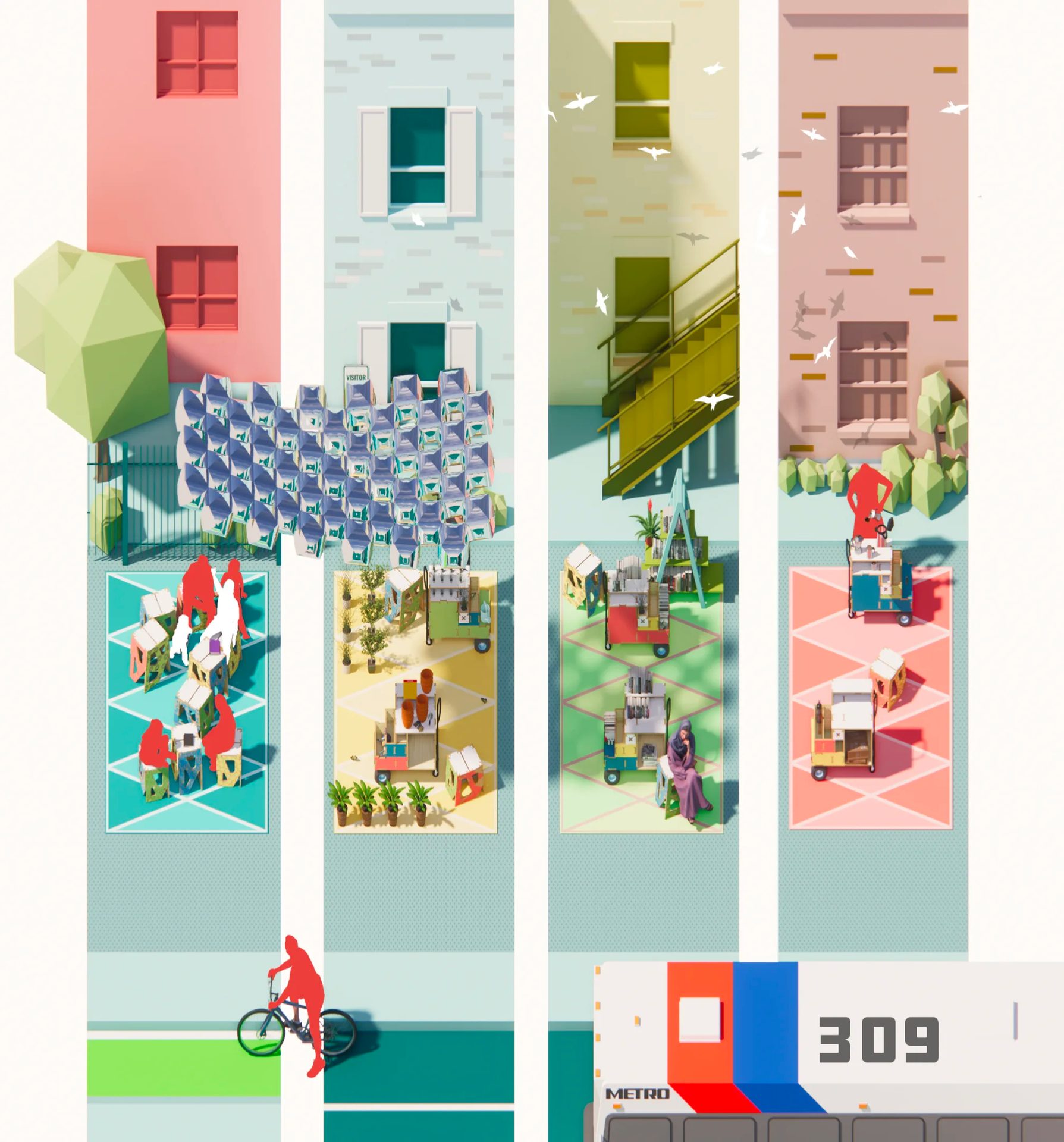University of Houston Hines College debuts 380,000 cubic feet inflated, dynamic structure
November 26, 2021
AIRSCAPES #1 Reimagines Iconic Johnson and Burgee Architecture Building
Earlier this year, the University of Houston Gerald D. Hines College of Architecture and Design recently celebrated its milestone 75th anniversary with a historic gala event remembering its namesake, the late Gerald D. Hines, and honoring the Hines Family. The event debuted the extraordinary installation AIRSCAPES #1, the work of Hines College professors Rafael Beneytez-Duran and Peter Jay Zweig, in the iconic Philip Johnson and John Burgee building on the UH campus.
Inspired by the project "The House of Education" (1773) of Claude Nicholas Ledoux, in 1986, Philip Johnson and John Burgee designed the University of Houston's new architecture building around an invented atrium to collect the knowledge and new ideas of architecture into a historical internal court. The atrium is embodied by the strong regularity of classic iconographies, axis, and symmetries. Stable forms are sometimes excessively signified.
AIRSCAPES #1, a dynamic pneumatic structure, challenges the values of the stable forms by using the ecology of air, the turbulence of our times, and the rising temperature of those viewing and interacting with the airscape tempered by the ever-changing surrounding atmosphere. The 380,000 cubic feet floating structure allows one's mind to move freely within this reconceived space of the "House of Education."
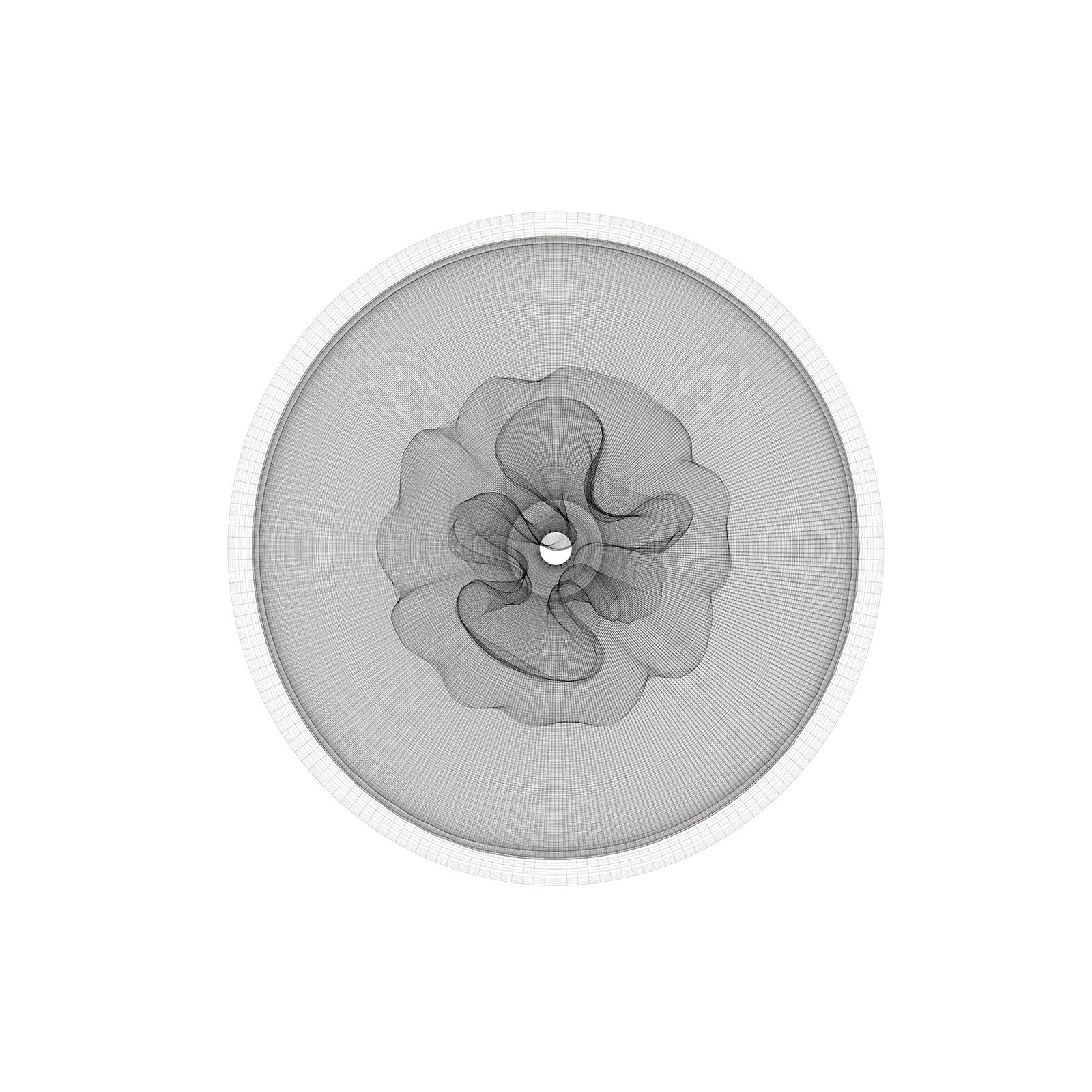
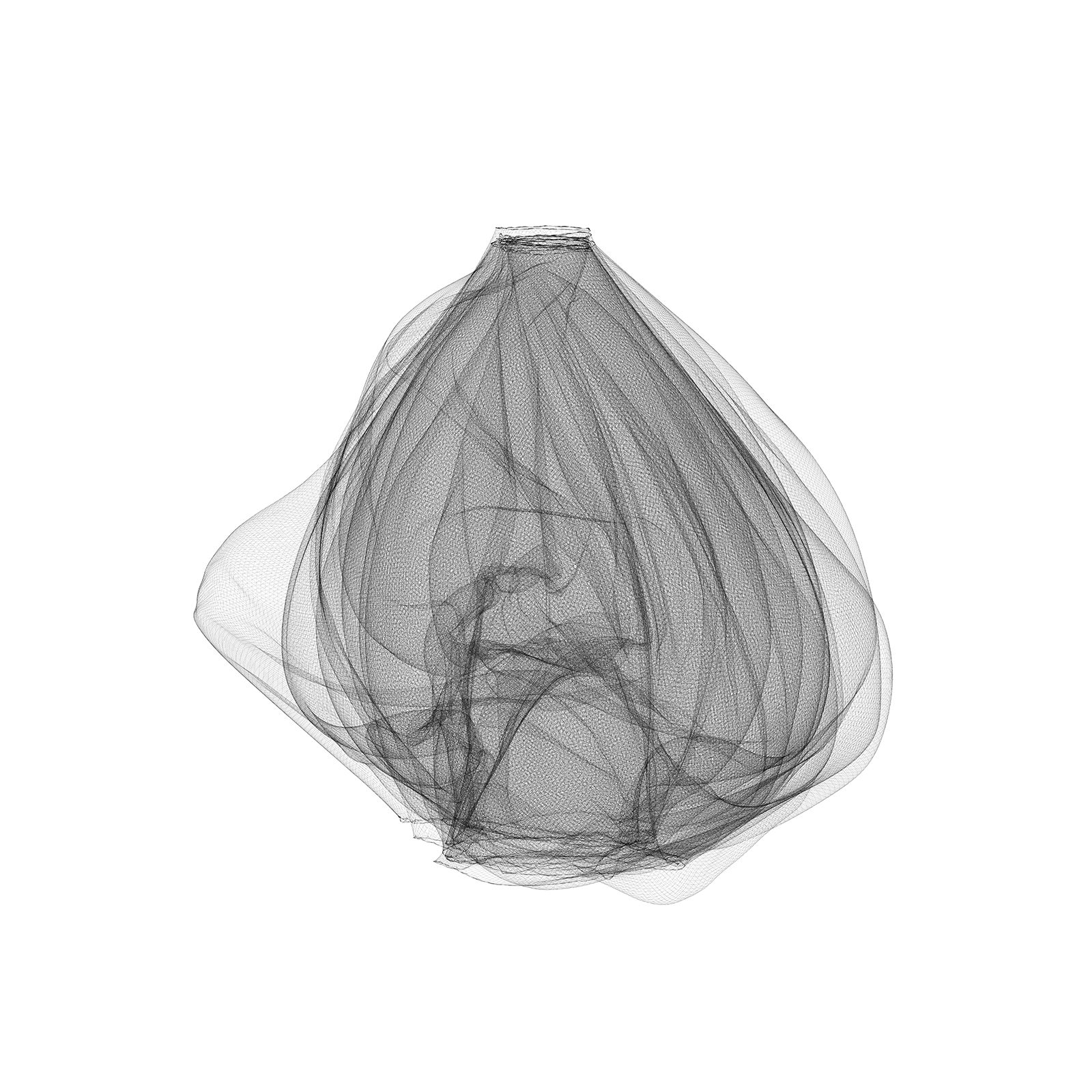
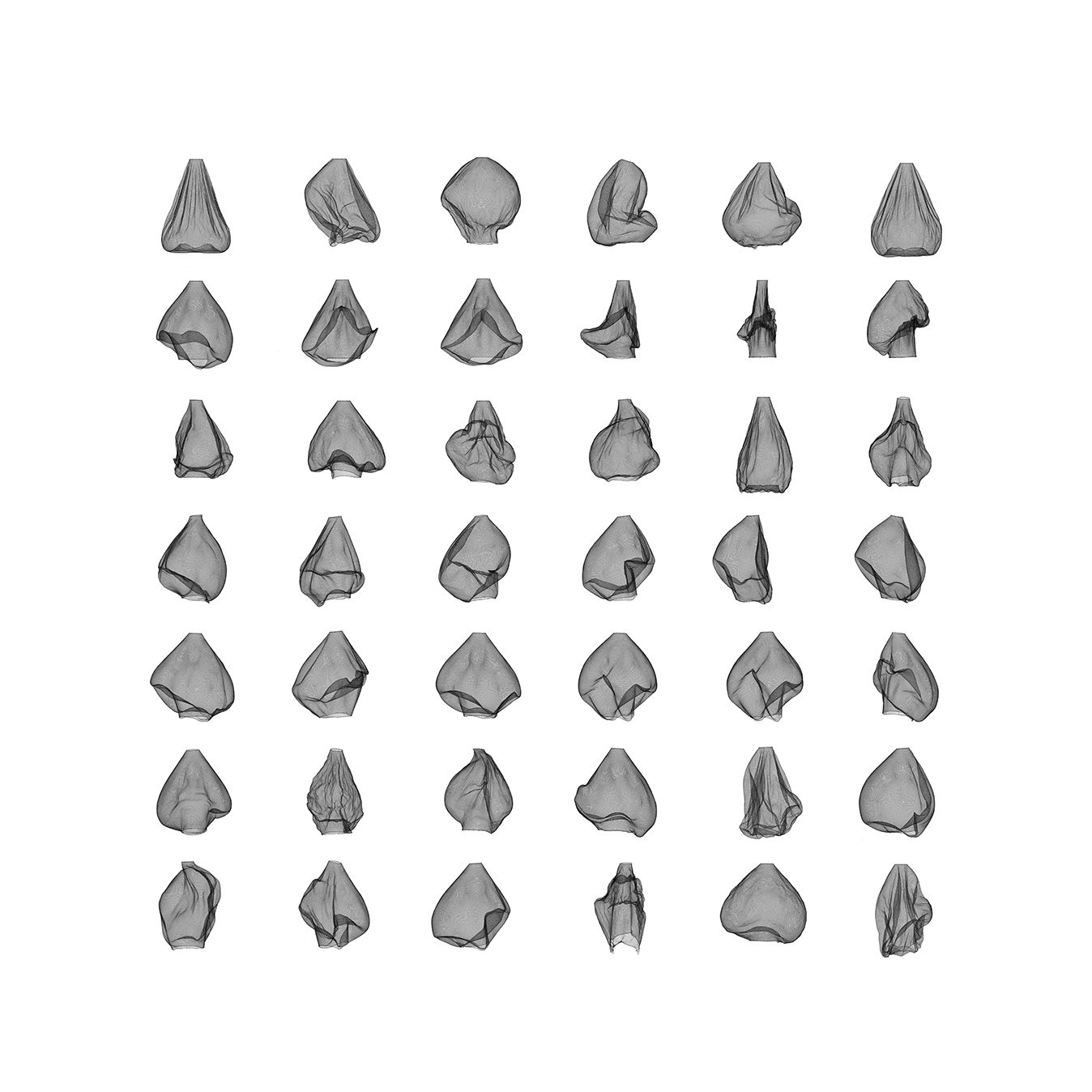
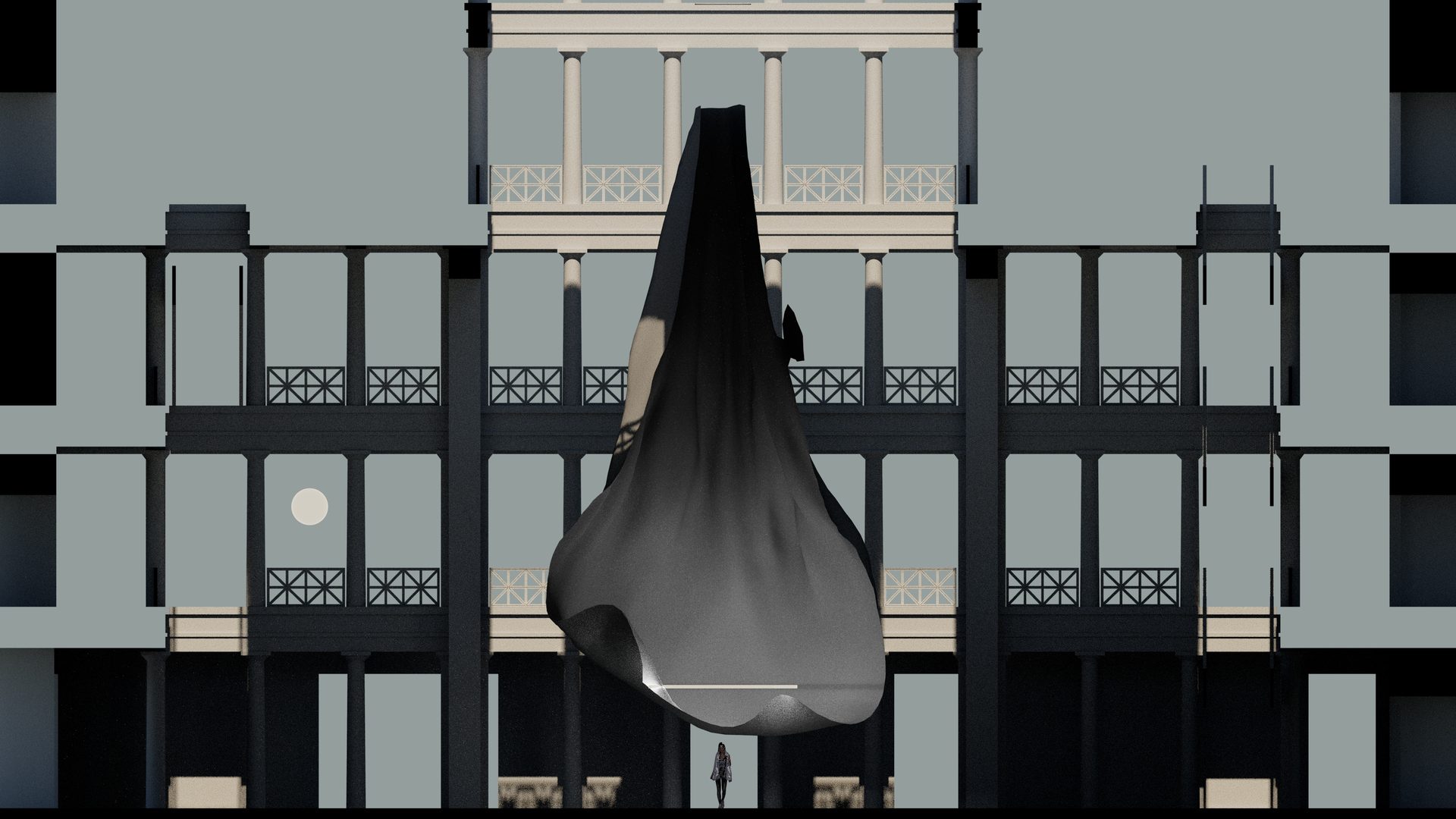
Above: Drawings and renderings of airscapes #1
AIRSCAPES #1 is air-born. It reminds us how much our language and theories of architecture have been built within a static world governed by weight and solid substances creating a dialogue of capturing and dominating space. AIRSCAPES #1 is dynamic and opens new fields of exploration where design can expand to include: negotiating space with uncertainty, where essence is no longer about heaviness but rather the qualities of being dynamic and using air as an evolving medium of architecture.
By breathing, we exchange and live in the space of air as a material substance. We accumulate aerosol substances penetrating through the lungs to the blood, to the brain, and finally to our very moods and thoughts. These accumulated forces responding to air create unpredictable internal weathers and turbulences. AIRSCAPES #1 is in a constant state of change: forgotten air, layer over layer of different temperatures, from the atrium's cold floor to the one-hundred-foot temple at the top of the "House of Education."
By breathing, we exchange and live in the space of air as a material substance.
AIRSCAPES #1 is in a constant state of change: forgotten air, layer over layer of different temperatures, from the atrium's cold floor to the one-hundred-foot temple at the top of the "House of Education."
AIRSCAPES #1 hovers as an inspiration to a new path in architectural education, an opportunity to look beyond static forms and enter the possibilities of dynamic forms. The 21st century is in a state of transition, consisting of moving targets, technologies, and existential climate challenges. Architecture, by its very nature, can rise to the moment.
Watch the video of AIRSCAPES #1 in action here. For information on this traveling installation, contact Rafael Beneytez-Duran at rbeneyte@central.uh.edu or Peter Jay Zweig at pjzweig@central.uh.edu.
More College of Architecture and Design Stories


